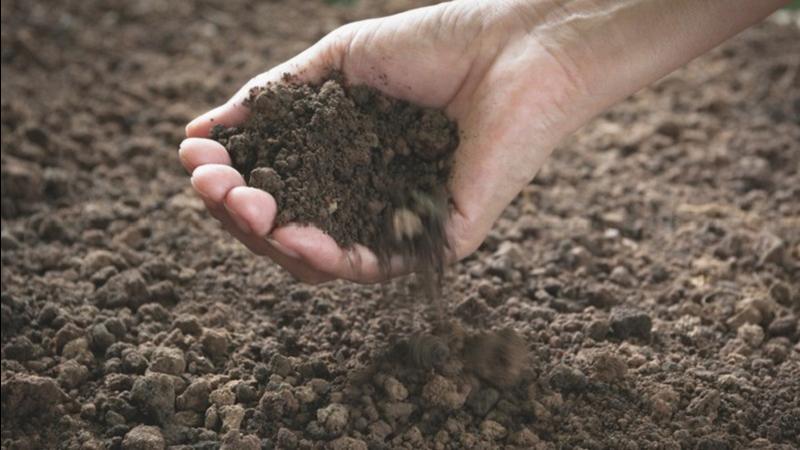The fertile ground beneath our feet rarely makes headlines, but Senator Rob Black’s push for a national soil health strategy is stirring conversation from small family farms to Parliament Hill.
I spent yesterday afternoon at the Eastern Ontario Soil Health Coalition meeting in Kemptville, where fourth-generation farmer Sarah Johnston didn’t mince words about the challenges facing Canadian agriculture.
“We’re losing topsoil faster than nature can rebuild it,” Johnston told me, pointing to erosion patterns visible across her 300-acre operation. “My grandfather could dig down and find rich black soil two feet deep. Now we’re lucky if we hit eight inches in the same fields.”
This reality underscores why Senator Black’s Bill S-277, which passed second reading in the Senate earlier this month, has gained surprising traction. The legislation would establish Canada’s first comprehensive national soil health framework, addressing what many agricultural experts describe as an underappreciated environmental and food security crisis.
The bill comes at a critical moment. According to Agriculture and Agri-Food Canada, our country loses approximately 193 million tonnes of topsoil annually to erosion—enough to fill nearly 20,000 Olympic-sized swimming pools. These aren’t just statistics; they represent a gradual diminishing of our agricultural productivity that could have long-lasting consequences for food prices and rural economies.
“This isn’t about partisan politics,” explained Dr. Helena Martins, soil scientist at the University of Guelph. “Healthy soil acts as a carbon sink, improves water retention during droughts, prevents flooding, and ultimately determines crop yields. The challenge is that soil degradation happens slowly enough that it doesn’t create immediate crises that demand attention.”
The proposed legislation would create a framework requiring federal-provincial coordination on soil health monitoring, research funding, and support for farmers implementing regenerative practices. The bill would also establish five-year progress reviews and regular public reporting requirements.
At the Rideau Valley Conservation Authority office in Ottawa, watershed specialist Jordan Chen showed me comparison maps demonstrating changing soil organic matter levels across Eastern Ontario over the past three decades.
“We’re seeing concerning trends, but also remarkable success stories where farmers have adopted cover cropping and reduced tillage,” Chen explained. “The problem is that these practices often require upfront investment that takes years to recoup through improved yields.”
That economic reality forms the backbone of the strategy’s most controversial element: proposed financial incentives for farmers implementing soil-building practices. Conservative critics have questioned the potential $45 million annual price tag, while some environmental advocates argue the funding doesn’t go far enough.
During question period last Tuesday, Agriculture Minister Marie-Claude Bibeau expressed cautious support, noting that “investing in soil health represents one of the most cost-effective climate adaptation strategies available to us.” However, she stopped short of committing full government backing until the bill completes its journey through Parliament.
What makes the legislation particularly noteworthy is its broad support from unlikely allies. The National Farmers Union, Grain Farmers of Ontario, and environmental organizations like the David Suzuki Foundation have all endorsed the framework—though each emphasizes different aspects.
“Our members see soil health as both an environmental and economic imperative,” said Martin Desmarais, policy director with the Agricultural Producers Association of Saskatchewan. “The challenge has been securing long-term funding that survives changing government priorities.”
The bill’s journey through Parliament reflects growing awareness that soil—unlike water or air quality—has largely fallen through regulatory cracks. While provinces have jurisdiction over natural resources, the proposed strategy would create national standards and coordination mechanisms similar to those established for water quality in the 1970s.
Yesterday’s soil coalition meeting demonstrated the practical realities behind the policy discussions. When rainfall simulator demonstrations showed healthy soil absorbing water like a sponge while degraded soil created immediate runoff, the implications became clear to everyone in the room.
“We’re essentially creating flood conditions and drought conditions simultaneously through poor soil management,” explained Dr. Martins. “The paradox is that the same practices that improve water retention also increase productivity—but they require upfront investment and technical knowledge.”
For farmers like Johnston, the national strategy represents acknowledgment of challenges they’ve been voicing for decades. “My family has worked this land for over a century,” she said. “The idea that we might leave it less productive for the next generation keeps me up at night.”
Senator Black’s bill faces several more hurdles before potentially becoming law. It must pass third reading in the Senate before moving to the House of Commons, where competing priorities and the possibility of a fall election could delay its progress.
Despite these challenges, the momentum behind soil health initiatives appears to be growing. Last month’s federal budget included $14 million for soil carbon research, while several provinces have launched complementary programs focused on agricultural sustainability.
As I drove back to Ottawa from Kemptville, passing fields being prepared for spring planting, the disconnect between urgent policy discussions and the gradual, almost imperceptible nature of soil degradation became apparent. Unlike dramatic environmental challenges that generate immediate headlines, soil health represents the kind of slow-moving crisis that tests our political system’s ability to address long-term challenges.
For Johnston and thousands of farmers like her, the stakes couldn’t be higher. “We’re not just growing this year’s crop,” she told me as we walked her fields. “We’re trying to ensure our grandchildren can farm this same land. That’s what this strategy is really about.”






